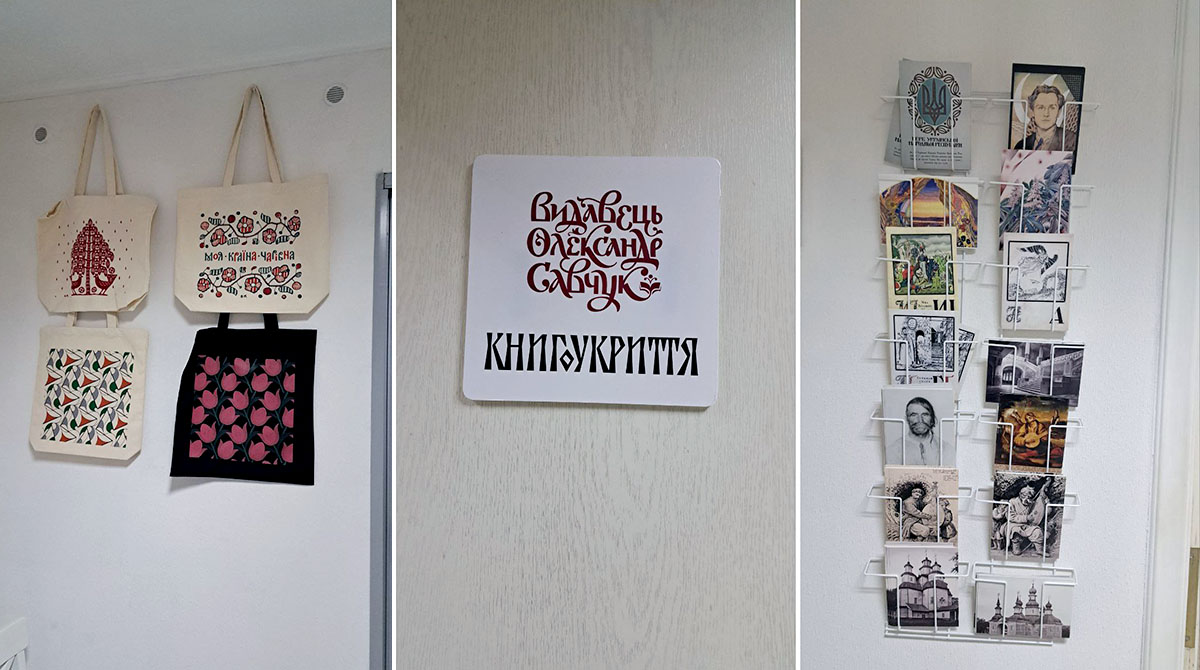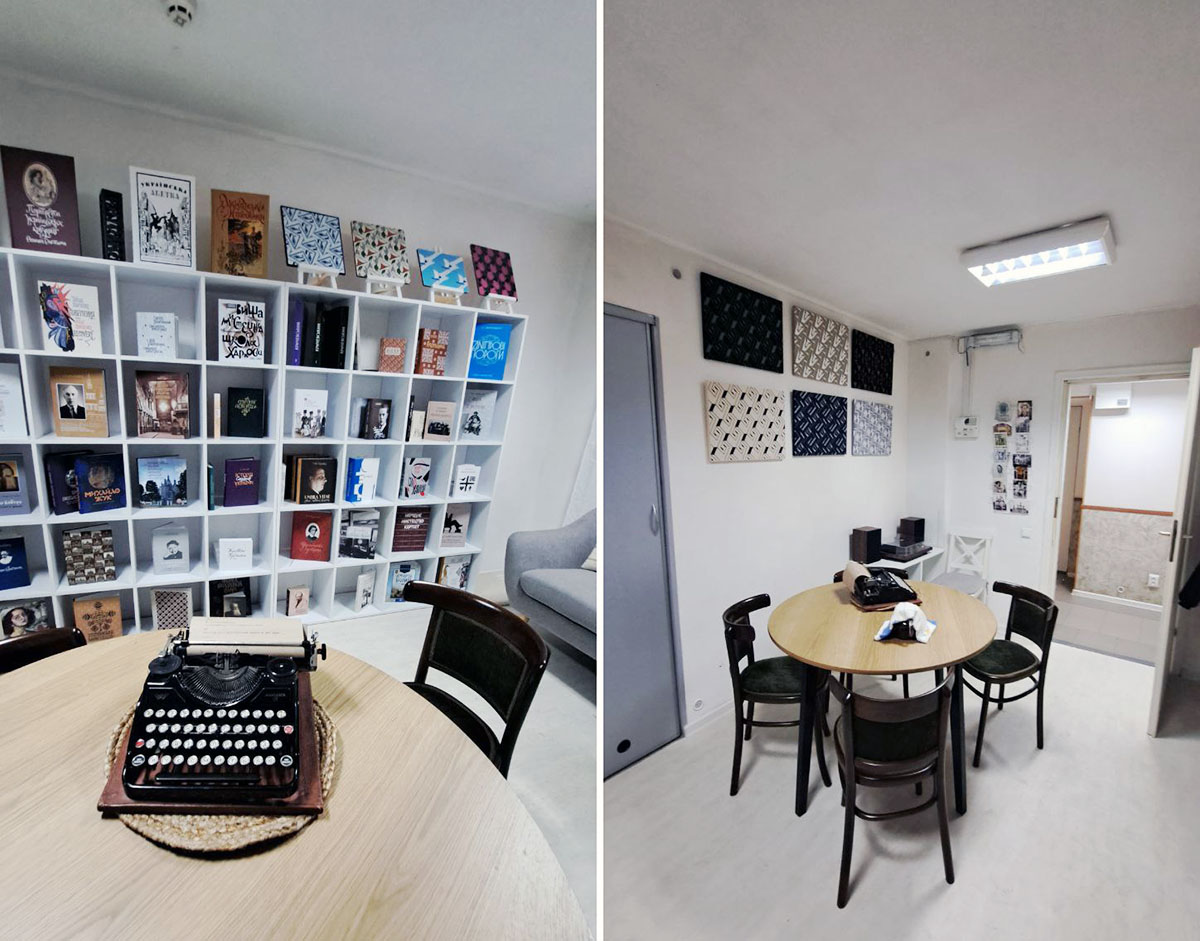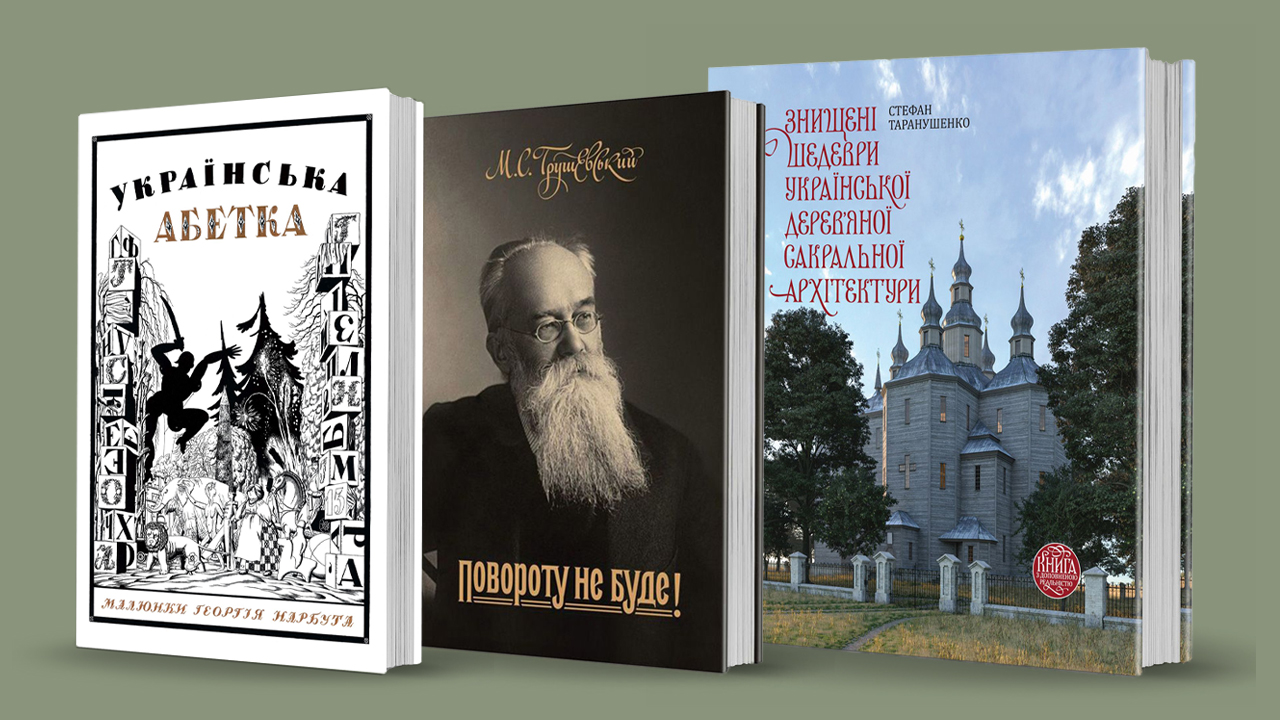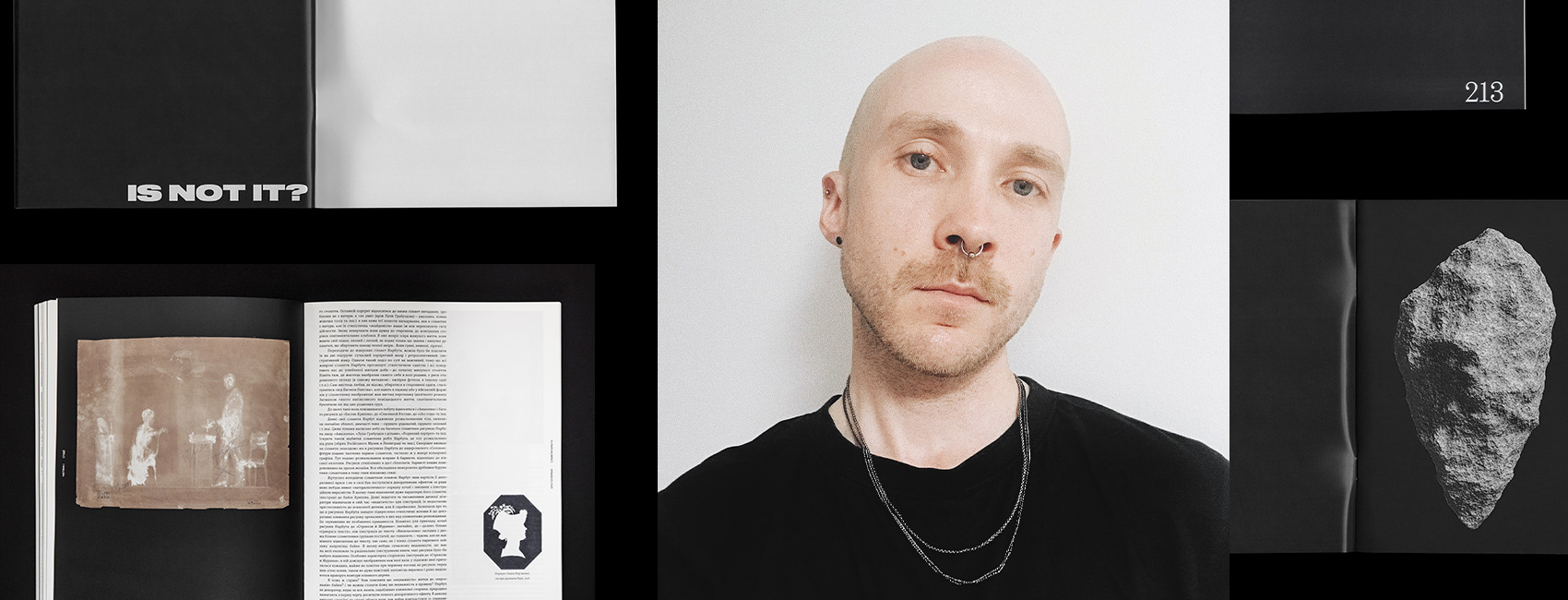* ESC - закрити вікно пошуку
Chytomo Spotlights
Amidst drone and missile attacks, Kharkiv publisher launches ‘Book Strongroom,’ a bomb shelter-bookstore, to preserve Ukrainian cultural heritage
15.12.2023
In November last year, Chytomo recognized individuals for their exceptional contributions to publishing, and Oleksandr Savchuk from Kharkiv was among the awardees. As the city has increasingly been under attack, we’ve decided to share more of Savchuk’s story and his efforts to defend and protect Ukrainian culture.
For over a decade, his publishing house has been instrumental in promoting the local identity of Sloboda Ukraine (Slobozhanshchyna), a region in northeastern Ukraine that shares a border with Russia and has been enduring relentless missile and drone attacks since the start of the full-scale invasion. In response, Savchuk launched “Book Strongroom,” a bookstore that doubles as a bomb shelter and an event space, which he now operates alongside the publishing house.
The need for bomb shelters in Kharkiv is clear. Since Feb 24, Russian forces have demolished the museum of writer and philosopher Hryhorii Skovoroda, buildings of H. S. Skovoroda Kharkiv National Pedagogical University and V. N. Karazin Kharkiv National University, and around five hundred schools, damaging the cultural infrastructure of Kharkiv and its region. Prior to the invasion, Kharkiv was a major printing center in Ukraine. In the past two years, Russian attacks have hit the Budynok Druku (House of Publishing), the Unisoft Book Factory, and a logistics hub owned by Ranok, one of the largest publishing houses in Ukraine.

“We try to take missile attacks and danger into account, but, unfortunately, often forget that production facilities suffer first. The working process of our publishing house is partially limited because some libraries and archives are closed. We’re doing the work we enjoy, and it feels to be a form of resistance to the Muscovite aggression,” Savchuk told Chytomo in a recent interview.
The continuous shelling of border areas and Kharkiv impacts not only the region’s material culture but also claims lives, lending Oleksandr Savchuk’s efforts to preserve the historical heritage of Slobozhanshchyna greater significance. Amidst the threats to its historical sites, Savchuk’s mission is clear:
“We had no intent to criticize Russia, but wanted to tell more about ourselves instead. It is much more efficient that way. It’s not about something negative. It is only about what we have or what we have lost.”

Oleksandr Savchuk Publisher, “Book Strongroom”
RELATED: Vingranovskyi Art Fest: Celebrating the Multifaceted Legacy of Mykola Vingranovskyi
The “Book Strongroom” plays a crucial role in this narrative mission. It has established itself as a key cultural center within the city and continuing to flourish, despite the mounting challenges.
Savchuk, when queried about the genesis of the “Book Strongroom,” shared insights into the limited presence of active bookstores in Kharkiv, noting that those in operation are part of larger chains. This realization prompted him not to feel slighted but to see it as an opportunity to draw readers directly to his doorstep.
“There are only a few active bookstores in Kharkiv, and all of them belong to bookstore chains. There might be more, but they are not in the media space. It happened that you can’t buy our books there. And I thought this was a good opportunity not to be offended, but simply to invite readers to come to me,” he explained.
The bookstore’s name, “Book Strongroom,” carries multiple layers of significance. Located in the historical heart of Kharkiv, visitors must descend into a basement to find it, transforming the space into both a literal shelter from shelling and a figurative sanctuary preserving books that safeguard information security and cultural identity.

Initially contemplating a coffee shop, Savchuk decided against it to maintain the focus on books and thoughtful conversation rather than the casual café ambiance. The “Book Strongroom” is envisioned as a haven for reading, purchasing books, and intellectual discourse. Now, the showroom is a place to relax, browse through books and listen to music played on vinyl records, especially during air raid alerts.
Savchuk’s publishing portfolio includes a diverse range of works, encompassing both popular and scholarly books, monographs, and research on architecture, history, and notable cultural figures. Notable publications include “Destroyed masterpieces of Ukrainian wooden sacred architecture” by Stefan Taranushenko, “No Turning Back!” by Mykhailo Hrushevsky, which compiles works by the distinguished Ukrainian historian and the first president of the Ukrainian People’s Republic, and “Ukrainian alphabet: Drawings by Heorhii Narbut,” celebrating the contributions of Heorhiy Narbut to Ukrainian graphic design. The specificity of this niche demands an informed audience, indicating that merely stocking these books in bookstores is insufficient.

Savchuk publishes popular and scientific books, monographs, research works on architecture, history and renowned cultural figures. Among the most known are: “Destroyed masterpieces of Ukrainian wooden sacred architecture” by Stefan Taranushenko, “No Turning Back!” by Mykhailo Hrushevsky (a collection of works by the prominent Ukrainian historian and the first president of the Ukrainian People’s Republic which existed more than 100 years ago), “Ukrainian alphabet” Drawings by Heorhii Narbut” (a visual book dedicated to the classic Ukrainian graphic artist Heorhiy Narbut who laid the foundations of modern Ukrainian design) and many others. The niche is very specific and requires a prepared audience. It is not enough for such books to be present on the shelves of a bookstore.
Savchuk critiques the conventional bookstore model, stating, “I think bookstores overestimate their role in the chain when a book reaches its reader. I emphasize that the publisher is the key player in this interaction.” He notes a diminished interest in bookstores that focus solely on sales without contributing a distinct vision or promotional efforts for the books.
RELATED: TRANSLATORIUM – why we look for words after silence
The initial print run for popular books by Ukrainian publishers typically begins at 3,000 copies. However, for niche products like those from Savchuk’s publishing house, the print numbers can start at a modest 300-500 copies. To avoid becoming financially unviable, such niche publications often rely on grants or government support.
Yet, direct grants for publishing are scarce. Savchuk articulates a broader vision:
“There is a thought that money should be invested not in supporting book publishing, but in supporting reading. If we explain to millions of potential readers that reading books, especially those published by Ukrainian publishers, is good and important, we will solve all the problems of book publishing once and for all. No need to have grantors. However, to reach this we need to do great systematic work for decades.”
With the recognition of the Chytomo Award, Oleksandr Savchuk’s publishing house will feature at this year’s Frankfurt Book Fair, a key international literary event. The publisher is preparing to release two books, in both English and Ukrainian, to showcase at the fair.
At Frankfurt, Savchuk’s publishing house will showcase their rich catalog focusing on Ukrainian culture, with notable subjects including artist and architect Vasyl Krychevskyi, publicist Yurii Shevelov, historian Omelian Pritsak, and the Slovo Writers’ House in Kharkiv. Special mention is made of Kharkiv-style banduras, highlighting their distinctive method that differs from the Kyiv style, among other cultural topics.

But most of all, the publisher hopes to have an opportunity to offer books for translation into other languages to foreign publishers.
“For me, this award is the best opportunity to tell the world about Ukraine, and our editions can help. Most of them are visual books and are written about renowned Ukrainians. For the foreign audience, who may not be interested in reading into contexts, but at least want to remember the visual image of Ukraine, this could be an advantage,” Savchuk explains.
Sometimes people in Ukraine say that Savchuk publisher does for our culture more than the entire Ministry of Culture, but Oleksandr disagrees:
“This is an exaggeration. It might reflect the effectiveness of our work in bringing forgotten names and cultural phenomena, distorted by the Soviet ‘sharovarshchyna‘, back into the public eye. However, we face challenges in expanding our projects beyond the cultural and publishing sectors. Frankfurt represents a hopeful avenue for engaging a broader audience.”
This article is part of “Chytomo spotlights:Ukrainian culture on and after frontline” project. The project is funded by the Stabilisation Fund for Culture and Education of the German Federal Foreign Office and the Goethe-Institut. goethe.de
This publication is sponsored by the Chytomo’s Patreon community
що більше читаєш – то ширші можливості

3614
Chytomo Spotlights
Kyiv Book Weekend: ‘Ukrainian book has gone beyond the “bubble” of well-known faces’
13.12.2023 - Mariia Horbach
2828
Chytomo Spotlights
From tragedy to comedy: Ukraine sees rise of stand-up comedy focused on reviving classic literature
01.12.2023 - Tetyana Leovova



